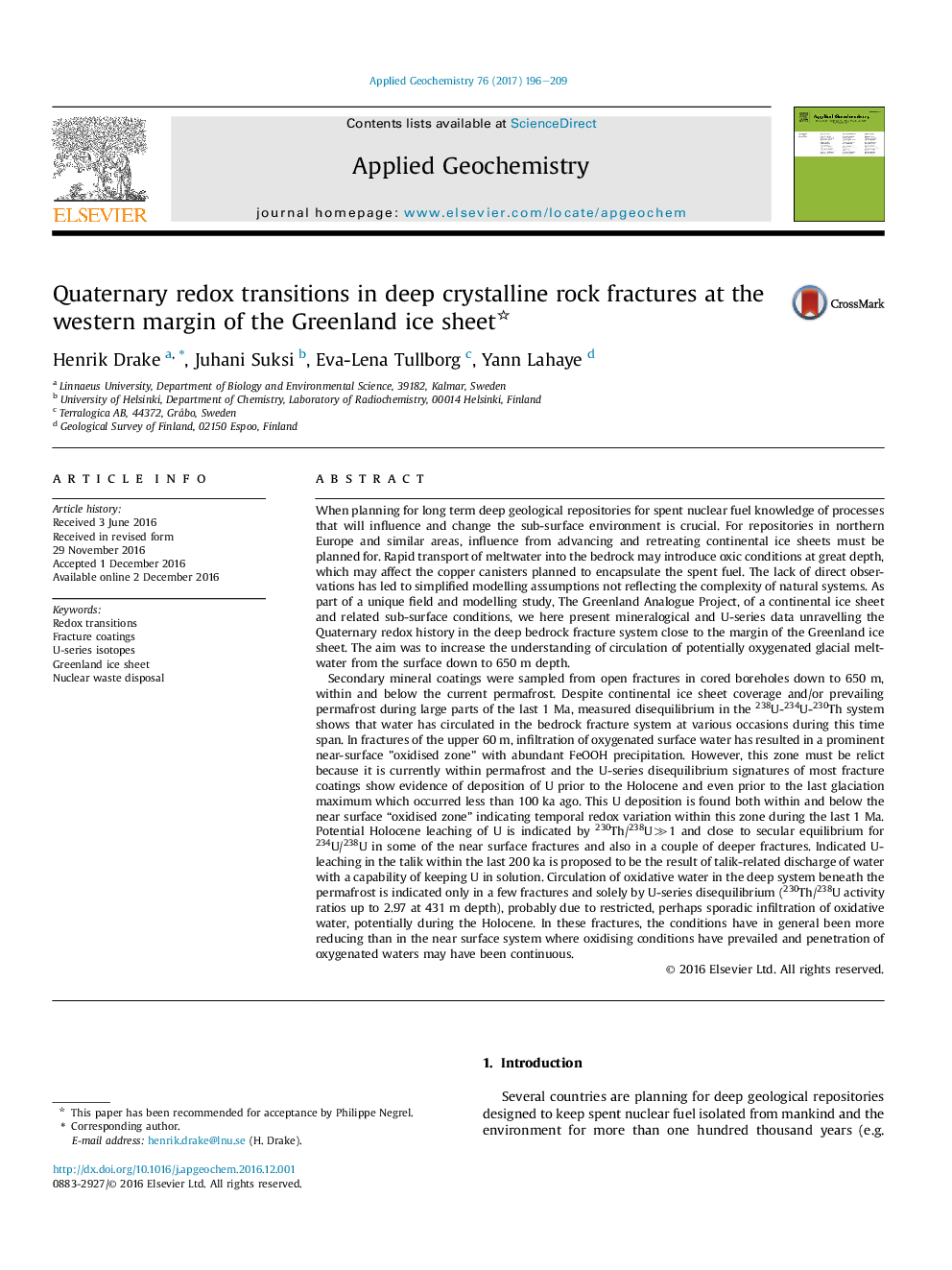| کد مقاله | کد نشریه | سال انتشار | مقاله انگلیسی | نسخه تمام متن |
|---|---|---|---|---|
| 5752629 | 1620215 | 2017 | 14 صفحه PDF | دانلود رایگان |
عنوان انگلیسی مقاله ISI
Quaternary redox transitions in deep crystalline rock fractures at the western margin of the Greenland ice sheet
ترجمه فارسی عنوان
انتقال ردکس کواترنر در شکستگی های سنگین بلورین سنگی در حاشیه غربی ورقه یخ گرینلند
دانلود مقاله + سفارش ترجمه
دانلود مقاله ISI انگلیسی
رایگان برای ایرانیان
کلمات کلیدی
موضوعات مرتبط
مهندسی و علوم پایه
علوم زمین و سیارات
ژئوشیمی و پترولوژی
چکیده انگلیسی
Secondary mineral coatings were sampled from open fractures in cored boreholes down to 650Â m, within and below the current permafrost. Despite continental ice sheet coverage and/or prevailing permafrost during large parts of the last 1Â Ma, measured disequilibrium in the 238U-234U-230Th system shows that water has circulated in the bedrock fracture system at various occasions during this time span. In fractures of the upper 60Â m, infiltration of oxygenated surface water has resulted in a prominent near-surface ”oxidised zone” with abundant FeOOH precipitation. However, this zone must be relict because it is currently within permafrost and the U-series disequilibrium signatures of most fracture coatings show evidence of deposition of U prior to the Holocene and even prior to the last glaciation maximum which occurred less than 100Â ka ago. This U deposition is found both within and below the near surface “oxidised zone” indicating temporal redox variation within this zone during the last 1Â Ma. Potential Holocene leaching of U is indicated by 230Th/238Uâ«1 and close to secular equilibrium for 234U/238U in some of the near surface fractures and also in a couple of deeper fractures. Indicated U-leaching in the talik within the last 200Â ka is proposed to be the result of talik-related discharge of water with a capability of keeping U in solution. Circulation of oxidative water in the deep system beneath the permafrost is indicated only in a few fractures and solely by U-series disequilibrium (230Th/238U activity ratios up to 2.97 at 431Â m depth), probably due to restricted, perhaps sporadic infiltration of oxidative water, potentially during the Holocene. In these fractures, the conditions have in general been more reducing than in the near surface system where oxidising conditions have prevailed and penetration of oxygenated waters may have been continuous.
ناشر
Database: Elsevier - ScienceDirect (ساینس دایرکت)
Journal: Applied Geochemistry - Volume 76, January 2017, Pages 196-209
Journal: Applied Geochemistry - Volume 76, January 2017, Pages 196-209
نویسندگان
Henrik Drake, Juhani Suksi, Eva-Lena Tullborg, Yann Lahaye,
